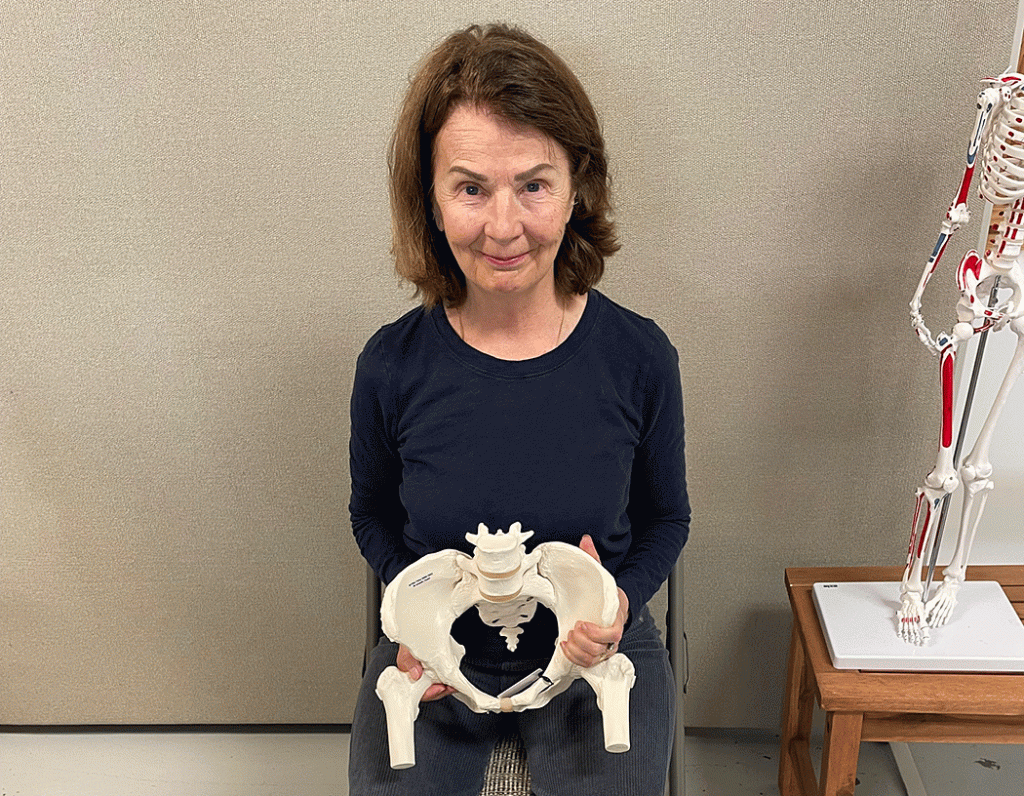
If you live in America, you are more likely to get back pain than a divorce (although in some cases, the two may be related). Our chances of getting low back pain are between 60 and 90 percent, depending on variables in lifestyle. Approximately 619 million people worldwide suffer from back pain, and that number is projected to reach around 843 million by 2050.
We’ve responded in the American way, spending more than $1.4 billion annually on back pain and posture correction gadgets that don’t offer much in terms of relief. That’s a lot of pillows, back braces, lumbar supports, and buzzing posture monitors. The health-care sector spends over $134 billion each year, more than on diabetes.
Reading these stats might lead you to conclude that we’ve neglected our back health. The opposite is true. The American Posture League was founded in 1914 with the goal of correcting curved spines in children. And proud as I am of Caitlin Clark, my favorite Iowa athlete is Louise Goodwin, a plucky Grinnell graduate who put the Hawkeye State on the posture map when she won the coveted “Miss Perfect Back of America” Award in 1933. We then gave the world the Iowa Posture Test, which, trust me, reads like 22 pages of torture. Not to be outdone, down the road in Kirksville, Missouri, the National League for the Prevention of Spinal Curvature held a “Best Spine in America” competition.
But the war on posture began long ago. As far back as the 16th century, we’ve been debating how to stand, sit, and correct “abnormal spinal curvatures.” What isn’t subject to debate is that our neck and spine aren’t getting any healthier. As the research shows, spines are getting worse. Lower back pain is the single leading cause of disability worldwide.
Sheila Terry of Fairfield has spent over a decade in search of a solution that works. Despite a lifelong interest in health and healing (she comes from a family of doctors), Sheila coped with chronic back pain for more than 15 years. That is, until she was introduced to the pioneering principles of Noëlle Perez, who created a system known as Balance. It’s the basis of Sheila’s Personalized Posture program.
Balance is arguably the approach of choice among Silicon Valley tech billionaires seeking to correct the damage from years of continuous computer, phone, and video game use.
So, Sheila’s bygone pain is now our gain. I sat with her to learn what she does and why.

There’s no shortage of chiropractors, physical therapists, and osteopaths claiming to treat back pain. What’s so special about Noëlle Perez?
Noëlle was one of the first Europeans to study in India with B.K.S. Iyengar, a world-renowned yoga teacher. She was a dedicated student, but she continued to suffer back and neck pain. Iyengar gave her simple advice that turned out to be life changing: “In the villages, walk behind Indian women,” he said, “and observe them closely, copy them. When your shadow matches theirs, you will have made progress.”
How was that life changing?
Iyengar was suggesting that she learn proper biomechanics by observing back-healthy people who—despite carrying heavy loads—didn’t appear to suffer from back or neck pain.
Perez traveled to many countries, observing and modeling how back-healthy local populations align their pelvis, stand, bend, walk, sit, and lie down. Many can carry hefty objects—such as water jugs and firewood—balanced on their heads their entire lives without spinal issues. They walk smoothly and gracefully, and typically live their entire lives without back pain.
Amazing. How is that possible?
Their spines are aligned vertically and in balance with gravity. In a healthy, natural posture, the weight of the body is evenly distributed and spread down the spine.
By comparing their biomechanics with those of us in the industrialized West, Perez was able to identify the source of our back problems and devise techniques to restore balance.
I assume she discovered what we are doing wrong. What’s at the root of our pain?
Misalignment of the pelvis from its natural, balanced position is the cause of many postural problems. Unlike back-healthy people, our poor posture can exert a large mechanical load on the low back, even when free of heavy weight. Deviations from the body’s natural position increase and exert uneven pressure on intervertebral discs.
I’m guessing that most of us are not in pelvic alignment. We wouldn’t be able to leave Costco carrying cans of tuna on our heads.
No chance. Misalignment seems to be more acute with each generation. Modern technology provides many benefits, but not for our back and necks. We are hunched over cell phones; we slouch on our couches and love sacs, binge-watching Netflix. Obesity, poor home-office ergonomics while doing remote work, and carrying heavy, poorly designed backpacks through airports all contribute to misalignment.
How does one fix misalignment?
In short, by aligning the pelvis to restore the natural curves of the back, resulting in a balanced posture. This involves a natural “stacking,” in which the head is balanced over the spine, and the spine over the pelvis. When “stacked” properly, your muscles can relax, because they are no longer straining to hold you up against gravity.
What’s the relationship between balanced posture and back pain?
Healthy posture alleviates back and neck pain by decreasing the amount of work your muscles must do. A healthy and aligned musculoskeletal system eases stress and reduces your risk of disc herniation and of back, arm, leg, and neck pain related to compressed nerves.
With Personalized Posture, we begin by observing your everyday movements and identifying habits that contribute to poor posture. The goal is to unlearn detrimental habits and relearn a way of moving that is in harmony with how the body is designed to function.
For example, imagine a straight line through your body from head to toe. Viewed from the side, this line should run through specific points, such as the crown of the head, shoulder, hip, knee, and heels. By observing how these points line up, we can detect postural deviations that may need to be addressed.
Our goal is integration of healthy posture into every aspect of life, from sitting and standing to bending and walking in harmony with gravity and therefore with nature.
For more information, see PersonalizedPosture.com.
